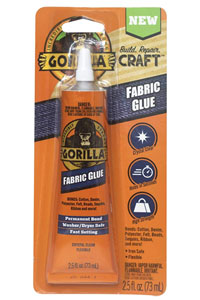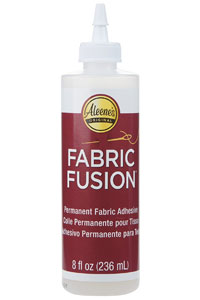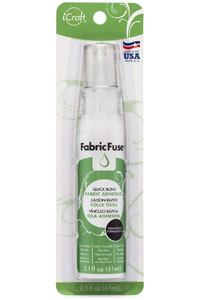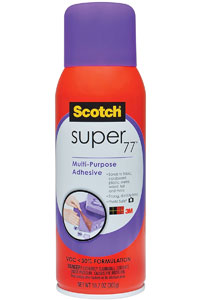Super glue is made of cyanoacrylate which is an acrylic resin that creates the strongest bond almost in an instant. It is designed to form strong bonds on materials like ceramic, metal, rubber, plastics, and other similar surfaces. Almost everyone has used super glue at least once to fix their broken household items. It is a versatile product used for several other types of repairs. But can you use super glue on the fabric? Does super glue work on clothes?
This article will help you clear your confusion about super glue. It also contains the list of the best glue used for fabric and steps to glue fabric to your clothes. Let’s dive right in!
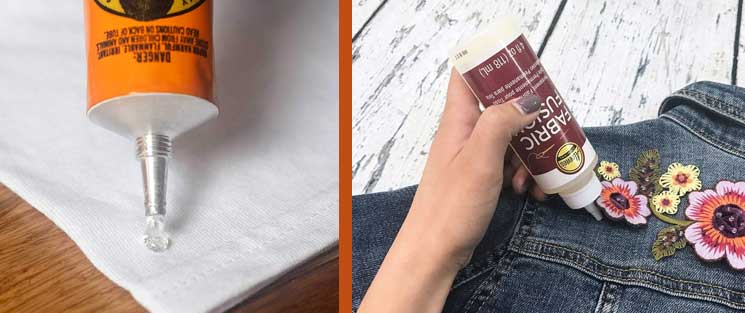
Can you use super glue on the fabric?
It is not recommended to use super glue on the fabric. When used on fibers like cotton, it tends to polymerize quickly. So, super glue will cause a quick heat generation that can burn the fibers.
Moreover, it cures into a brittle form that is not flexible like fabric needs to be. Instead of supporting fabric drapes and movement, the bond will crack.
You may also face the problem of gluing it at the start. As you glue, it will seep through the fibers or may get the fabric stuck to your fingers.
Read More:
What is a Bolt of Fabric?
DIY Fabric Projects with Hot Glue
Does super glue work on cotton or wool?
Super glue chemically reacts with cotton or wool which generates enough heat to start a fire. Using superglue on cotton or wool causes a rapid chemical reaction. It releases enough heat that results in minor burns. The glue hardens very quickly due to the high surface area of fibers. So, avoid using it with these materials.
Can you use any kind of glue on the fabric?
Glues are designed with certain properties for specific materials. They react in different ways depending on their applications. There are some glues you need to avoid using on fabric.
Is Gorilla super glue good for fabric?
Gorilla glue is best for outdoor use, perfect for using for screen printing fabric. But it will ruin the fabric. It might create holes and tears as it is extra strong. You can only use gorilla glue for wood and other durable materials. It creates a permanent bond in non-porous surfaces like ceramics, metal, glass, and plastic.
Does Loctite super glue work on fabric?
It is not a good idea to use Loctite superglue on the fabric. Loctite is great for repairing flexible plastics that include vinyl seats, cushions, and outdoor gear. It dries to a transparent, water-resistant bond to resist brittleness with age.
Can you use gun glue on the fabric?
It is not ideal to use hot gun glue on fabrics. But if you want to use gun glue, use a low heat glue or adjust the low heat setting on the glue gun. Textile materials can be damaged with extremely hot glue. So, always test the glue on a small piece of clothing. Check that you have a low-heat glue stick or the right glue gun setting to avoid melting of fabric.
How to remove super glue from fabric?
If you have spilled superglue on your favorite shirt, don’t worry. Here are the simple steps you need to follow to get that stain out.
- Wait for the glue to dry completely before dealing with the stain. It should feel hard to touch and not be sticky. By soaking in cold water, you can speed up this process.
- If you are removing stains from regular cotton or synthetic fibers, use a spoon to scrape off the glue. Scrape gently rather than digging into the fibers. You will be able to get rid of most of the glue in this way. In the case of delicate fabrics like silk or wool, it is best to skip this step.
- Soak a cotton ball in acetone and check on the tiny spot of your fabric. If there is no adverse impact, dab the stain with acetone and rub gently. The acetone will then start to break the adhesive bond between fabric and glue, including homemade glue. You will feel with your fingers that the dried glue is softening. Keep dapping until you feel the stain is completely soft.
- Now proceed using a stain remover to get the job done. Before washing, rinse in cold water.
- Wash the clothes in the washing machine. Use the warm setting. Make sure to set the temperature that the fabric can stand.
Which glue to use on fabric?
Do you want to turn old clothes into brand-new ones? Fabric glue is best to join seams, finish the hem, and attach buttons. You can use it for leggings, leather, denim jeans, and other fabrics. Every no-sew project works on different fabrication and techniques. There should be a collection of fabric glues in your sewing box. For your ease, here are some of the best fabric glues to fulfill your no-sew projects.
Top 4 Best Glue for Fabric
1. Gorilla Water Proof Fabric Glue
This Gorilla Water Proof Fabric Glue fabric glue is 100% water-resistant. You can wash the clothes repaired with this glue in the washing machine.
It is formulated specifically to bond fabric and hard-to-hold embellishments. This glue provides fast setting, permanent bond, and remains flexible after washing.
It is a high-strength adhesive that dries crystal clear. You can use it to work on a variety of surfaces. It is a great alternative to a traditional needle and thread.
You can use it on denim, cotton, polyester (tight weave), wool, corduroy, and fleece. It also works well for embellishments like beads, rhinestones, buttons, and ribbons.
This fabric glue is not recommended for velvet, satin, jersey knit, and tulle. It may not work fine on delicate, thin, or loose-weave fabrics.
2. Aleenes Fabric Fusion Adhesive
Aleenes fabric fusion Adhesive is the perfect choice for a wide variety of surfaces and embellishments.
You can rely on this fabric glue as it provides a permanent fabric bond. It features a clear, less odor and non-stringing formula.
Unlike other fabric glues, it remains flexible that allows your fabric to move with you, not against you.
You can work on it with ease. It is also machine-washable and dry cleanable. You can work on cotton, leather, jersey, flannel, denim, trims, and more.
The fusion comes in an 8–oz bottle.
3. iCraft Fabric Fuse Liquid Adhesive
This Fabric Fuse Liquid Adhesive fulfills all your no-sew fabric crafting projects.
It is a perfect choice for hems and home decoration. You can make and embellish your projects quicker with a strong, permanent bond.
It is a nontoxic adhesive containing 2.1fl oz liquid. The glue dries clear after you apply it to the garments.
It does not stiffen or make the clothes feel rigid. iCraft fabric fuse is machine washable and dryable.
You can wash the glued clothes. Even after washing, it remains flexible.
4. Scotch Super Multipurpose Adhesive Spray
Scotch Super adhesive spray is an easy-to-use solution for home, office, and classroom.
It is a versatile and fast-drying spray adhesive. You can apply it to a wide variety of lightweight materials.
The fast, aggressive tack and low soak-in features make it best for a wide range of projects.
You can use it without creating any mess around. It provides full coverage with a strong bond that gives you professional results.
You can bond to fabric, plastic, metal, felt, wood, cardboard, cushion foam, and more.
It dries clear and quicker without bleed through and wrinkling.
How do you glue fabric to clothes?
You need to understand a few techniques to glue fabric to your clothes that are listed here:
- Firstly test the glue on a scrap piece of paper. You just need to apply a small amount at the start. Observe how the fabric reacts after the glue dries.
- Use fabric glue as a replacement for a basting stitch. It will help you to save a lot of time. After completing the permanent stitches, wash out the fabric glue. Avoid using pins to remove the basting stitches.
- For glossy or slippery fabric, pinning before sewing can be difficult. Use fabric glue as an alternative to pins. It will help to avoid damage due to sewing over pins. Hold the fabric together with fabric glue until you are done with the job.
- Fabric glue is a great choice to attach small items to the garments. It is perfect for delicate lace trims or no-sew buttons. Needle and thread can take a lot of time to embellish on clothes.
- You can leave the raw cut edge as a hem for knit fabric. But you need to hem the finish for other fabrics. Just roll the edge a couple of times. Use a small amount of fabric glue to complete the no-sew hem.
- Use fabric glue to add patches or pockets to upgrade your old clothes. But you can end up with misaligned pockets. The best way to deal with this issue is to use fabric glue as a temporary bond before you secure it with a solid stitch.
Tips for using fabric glue
- Use fabric glue in a small amount. If you apply too much adhesive, the drying process will slow down. It will also over-saturate the fabric that weakening the adhesion.
- Try to brush on a thin layer of fabric fusion while sticking lighter fabrics to the fabric. Then gently press the fabrics together. You can avoid oversaturation in this way.
- To keep the fabrics and embellishments pressed together while drying the glue, use sewing pins or clothespins. Then remove once dry.
- Use cold water to wash fabrics and air dry for the finest results.
Conclusion
We hope this article has cleared your confusion about using super glue on the fabric. No doubt, super glue can tackle multiple kinds of repairs. But it is not a good idea to use it on fabric. If you want to repair your clothes quickly, fabric glue is a great alternative to stitching. Having fabric glue in your sewing kit is not a bad idea. It is a great product for people who do not know how to sew. It will help you a lot without wasting your time. Also, now you have an idea about the best fabric glues and how you can use them. Pick the right glue and get started with your project!
